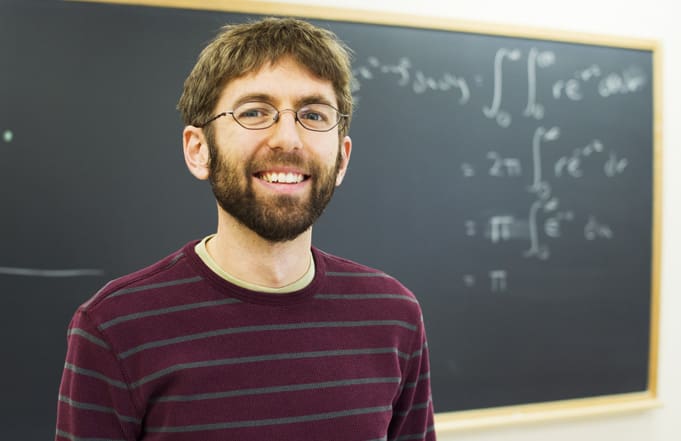March 23, 2018
 Associate Professor Tyler Seacrest has been teaching at the University of Montana Western for seven years. His goal is to focus on making mathematical research and applications accessible and appealing to students, even those without a strong math background.
Associate Professor Tyler Seacrest has been teaching at the University of Montana Western for seven years. His goal is to focus on making mathematical research and applications accessible and appealing to students, even those without a strong math background.
According to Seacrest, one way to make math accessible to students is to utilize powerful mathematical programs such as “Mathematica” and “MATLAB” to explore applications like modern cryptography, or to visualize predator-prey models in real time. It is also engaging for the students to model the data behind items like bungee cords, water bottle rockets, or streamflow in the Beaverhead River, and provides classes an opportunity to explore outside of the classroom and capture and then analyze real-world data.
In order to provide students with tangible examples of theoretical mathematics and proofs, Seacrest has brought in different types of games to make the concepts more relatable.
“When we studied the mathematics behind card-based magic tricks, some students became interested in the 21-card-trick, so much so that they fully figured out the mathematics behind it and generalized the trick to work with any number of cards, after which they wrote a sophisticated paper on their process. As a mathematical enrichment opportunity for the students at the Dillon Middle School, we presented this and other mathematical card tricks as a way to share the research of the class with the community. In general, using engaging questions like the math behind a card trick engages students in the type of thinking a mathematician needs to do,” said Seacrest.
In addition, Tyler has worked on a lot of different types of projects for his own research. His PhD is in an area of math known as “graph theory”, which is perhaps better described as “network theory”, and studies the structure behind computer networks, road networks, social networks, or other structures that can be described as nodes connected by lines.
He has also published two research articles on graph theory during his time at Montana Western in the “Journal of Graph Theory” and the “Journal of Combinational Theory.” While collaborating with Assistant Professor Debbie Seacrest, who is also interested in the math behind games, they have completed one project and are currently working on another in the same area.
Working with Associate Business Professor Christian Gilde, Tyler Seacrest collaborated on a project related to fair scheduling that was presented at the annual meeting of the Society of Judgement and Decision Making. In addition, Seacrest has also worked with external collaborators at Harvey Mudd College in California and the University of Nebraska – Lincoln.